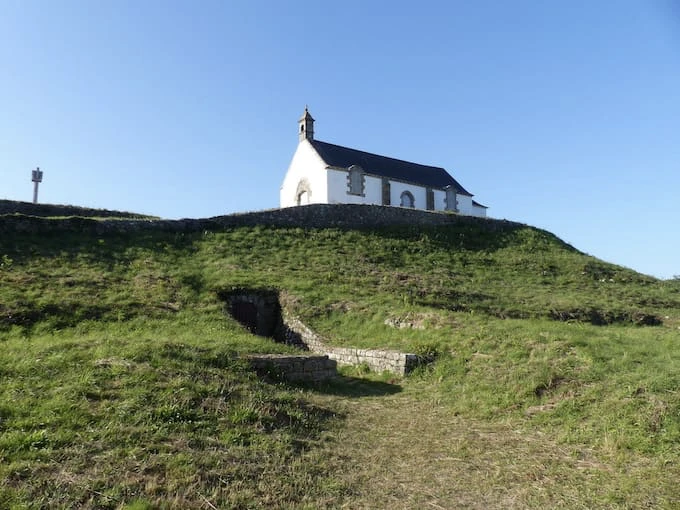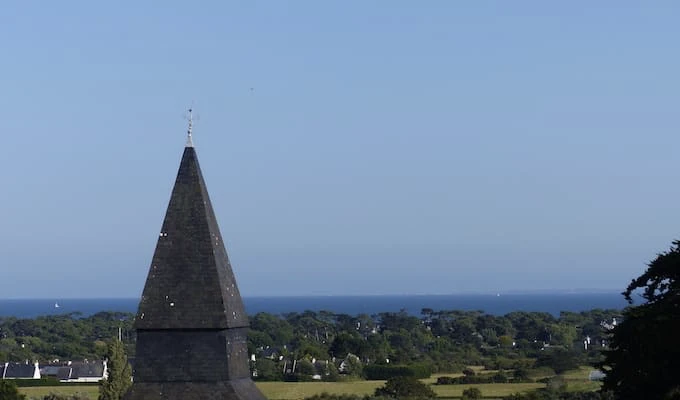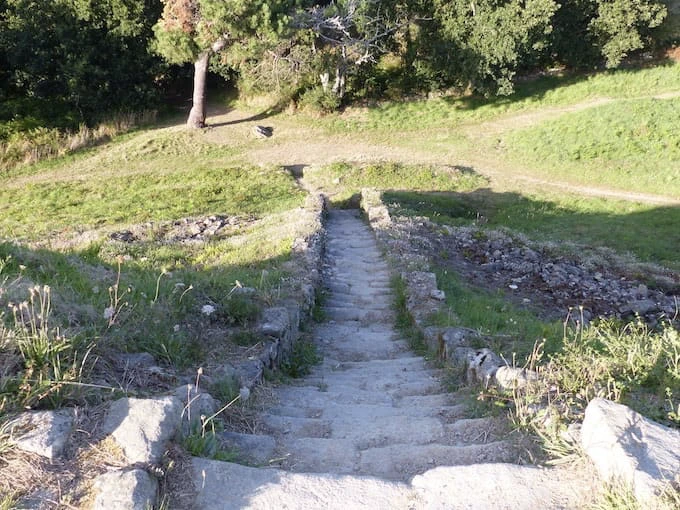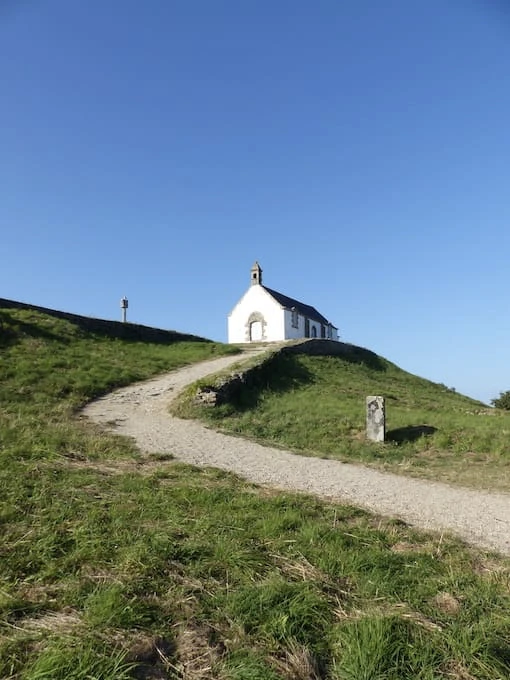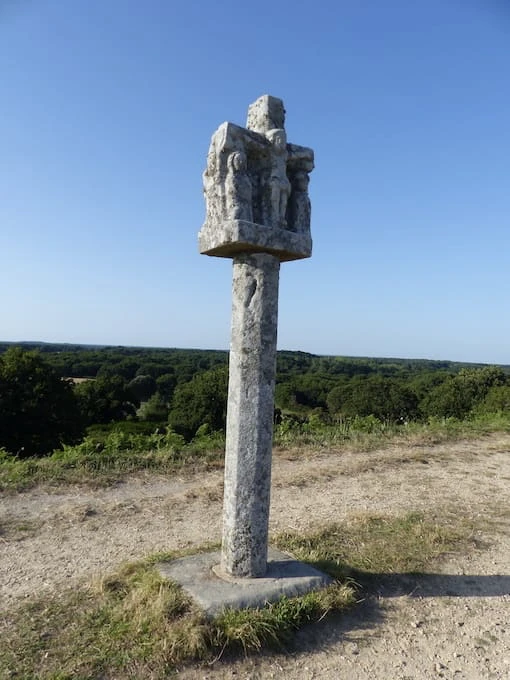The Carnac Tumulus
The Saint-Michel Tumulus or Carnac Tumulus
Halfway between the coast and the Carnac alignments, rises an elevation that overlooks the plain, the Saint-Michel Tumulus, more commonly known as the Carnac Tumulus.
There are officially eight structures named “Tumulus” in the town of Carnac.
- Kuergueoch Tumulus
- Crucuny Tumulus
- Lann-Vras Tumulus
- Moustoir Tumulus
- Kerlescan Tumulus
- Manio Tumulus
- Er-Velenc-Losquet Tumulus
- Kercado Tumulus
- Saint-Michel Tumulus
All of these remains have archaeological interest, but only the Kercado Tumulus and the Saint-Michel Tumulus have significant tourist interest. The Saint-Michel Tumulus is associated by locals as the Carnac Tumulus because it is both the largest and most emblematic in the town.
The Tumulus, a Prehistoric Monument Thousands of Years Old
The mound forming the Tumulus is not natural; it is actually a megalithic tumulus. A tumulus is an artificial mound that covers a dolmen or burial chamber. Depending on its structure, it will be called a Tumulus or a Cairn. A Tumulus is a mound, an artificial hill composed of earth and mixed stones (rocks). Tumuli are also sometimes referred to as Tumular Mounds or “Barrow”. The Saint-Michel mound erected by our ancestors is made of rock and earth, thus belonging to the Tumulus family.
The mound that overlooks Carnac and rises to 44 meters in height is also known as Mont Saint-Michel or Mané-Miguel in Breton. It was long ignored and confused with a simple hill.
The Carnac Tumulus is, in reality, a prehistoric monument dating from the Neolithic period and probably erected between 5000 and 4500 years BC. Beneath tons of stones lie galleries leading to stone chests and a crypt that was the burial place of a prehistoric man.
The Largest Tumulus in Morbihan
Like all tumulus, the Saint-Michel barrow contains a Dolmen within it, a funerary tomb from the Neolithic period. The uniqueness of the Carnac Tumulus lies in the fact that the envelope surrounding this Dolmen is the largest in Morbihan. With a height of 10 meters, a length of 125 meters at its base (75 meters at the top), and a width of 60 meters, the Carnac Tumulus contains nearly 40,000 cubic meters of stone and earth.
Just like visiting the Carnac alignments and its thousands of menhirs, the Carnac Tumulus is one of the must-visit attractions for all travelers coming to the seaside resort. The observation deck at its summit also offers an overview of Carnac and the Quiberon Bay. You can catch a glimpse of Pointe du Conguel (Quiberon), as well as Locmariaquer and Arzon.
Excavations of the Carnac Tumulus
The first excavations of the Tumulus were carried out in 1862 by René Galles. Previously, the Neolithic structure was still mistaken for a natural hill. During this initial excavation, the main crypt was discovered, along with the main artifacts it contained.
It wasn’t until the year 1900, with the comprehensive excavations by Zacharie Le Rouzic, Ault du Mesnil, and Charles Keller, that the internal structure was fully determined.
The Treasure of the Carnac Tumulus
The Saint-Michel Tumulus covers a Dolmen that served as a burial site. It also covers 21 stone chests arranged circularly around the main crypt. Inside the main crypt of the Saint-Michel Tumulus in Carnac, amidst ashes and incinerated bones, thirty-nine stone axes, thirty-nine fragments of ivory, two flint chips, and a necklace of variscite beads and pendants were discovered.
Location of the Carnac Tumulus
The Saint-Michel Tumulus overlooks Carnac; it is situated on the highest point of Carnac. Impossible to miss, it is easily identifiable with its white chapel perched above it.
Visiting the Carnac Tumulus
It is possible to ascend the Carnac Tumulus, but the interior of the structure is now off-limits to the public due to several collapses. The interior of the mound is therefore not accessible, and only its exterior is observable. Climbing the Tumulus remains an experience to try, as it offers the best panoramic view of Carnac. If you plan to visit the Tumulus, also take the opportunity to visit the charming Saint-Michel Fountain located below, about a hundred meters from the mound.
In the absence of being able to visit the Saint-Michel Tumulus, it is still possible to explore the interior of another mound dating from the same Neolithic period: the Kercado Tumulus. This one is located about 1 km as the crow flies from the Saint-Michel Tumulus, taking about 30 minutes on foot. Despite its smaller size, you can enter the funerary crypt. The Kercado Tumulus is open to the public, but since it is located on private property, a contribution of 1 or 2 euros is generally requested for the visit.
For enthusiasts of time travel, there are two rock mounds (Cairns) that you can visit in the Morbihan region: the Cairn of Petit Mont located in Arzon, and the Cairn of Gavrinis in Larmor Baden. These two mounds are quite impressive, notably featuring engravings on the different stones that compose them. A detour not to be missed if you’re visiting the Gulf of Morbihan.
